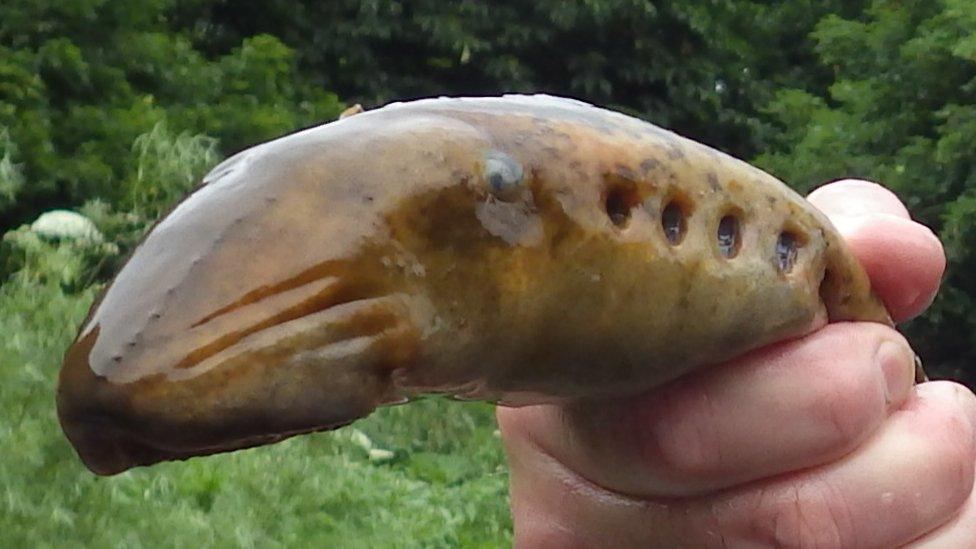Lampreys return to Yorkshire rivers after 30 years
- Published

Lamprey resembles an eel because it has no scales and can grow up to 3ft (1m) long
A prehistoric rare fish has been seen in Yorkshire rivers for the first time in 30 years after conservation work.
Sea lampreys have returned to rivers Ouse, Don, Trent and Derwent after the Environment Agency installed new 'tiles' to allow them to swim upstream.
The snake-like jawless creatures predate dinosaurs by 200m years. They can grow up to 3ft (1m) long.
Industrial pollution and man-made barriers had reduced their numbers over the past 200 years, the agency said.
The Environment Agency lamprey tiles have conical protrusions, allowing fish to anchor themselves upstream using their sucker-like mouths.
Simon Toms, fisheries expert at the Environment Agency, said: "...some rivers have not been capable of supporting lamprey species as a result of water quality, poor habitat and man-made barriers.
"Now that water quality has improved and some of these barriers have been removed, we are seeing lampreys return to the upper reaches of rivers such as the Ouse, Trent and Derwent, where they were absent as recently as 30 years ago."
Lamprey has a circular disc of razor sharp teeth instead of jaws. It uses its mouth like a suction-cup to attach itself to the skin of a fish and rasp away tissue with its probing tongue and teeth.
During the Middle Ages lampreys were widely eaten by the upper classes throughout Europe. It is thought King Henry I died from overindulging on lampreys.